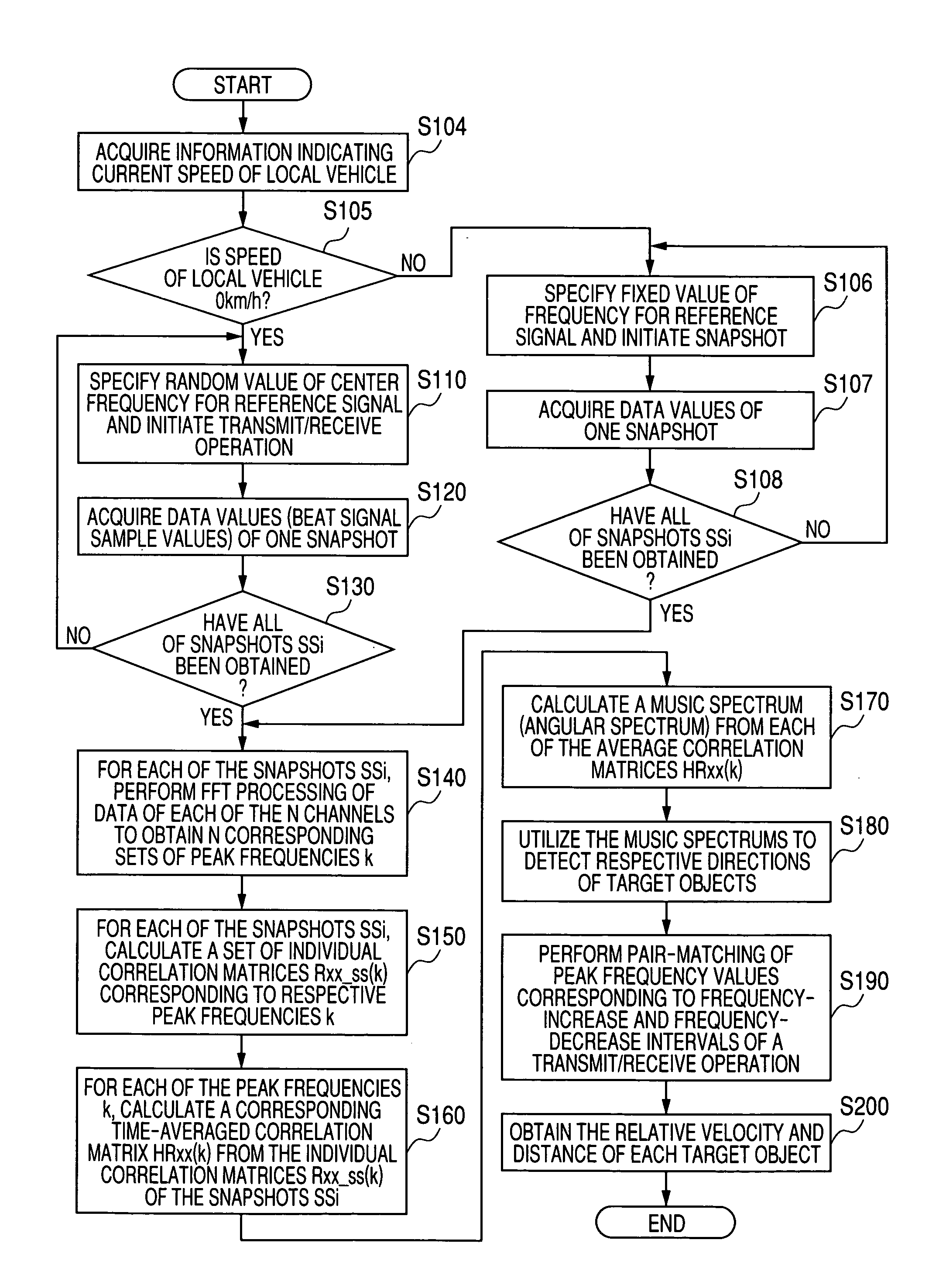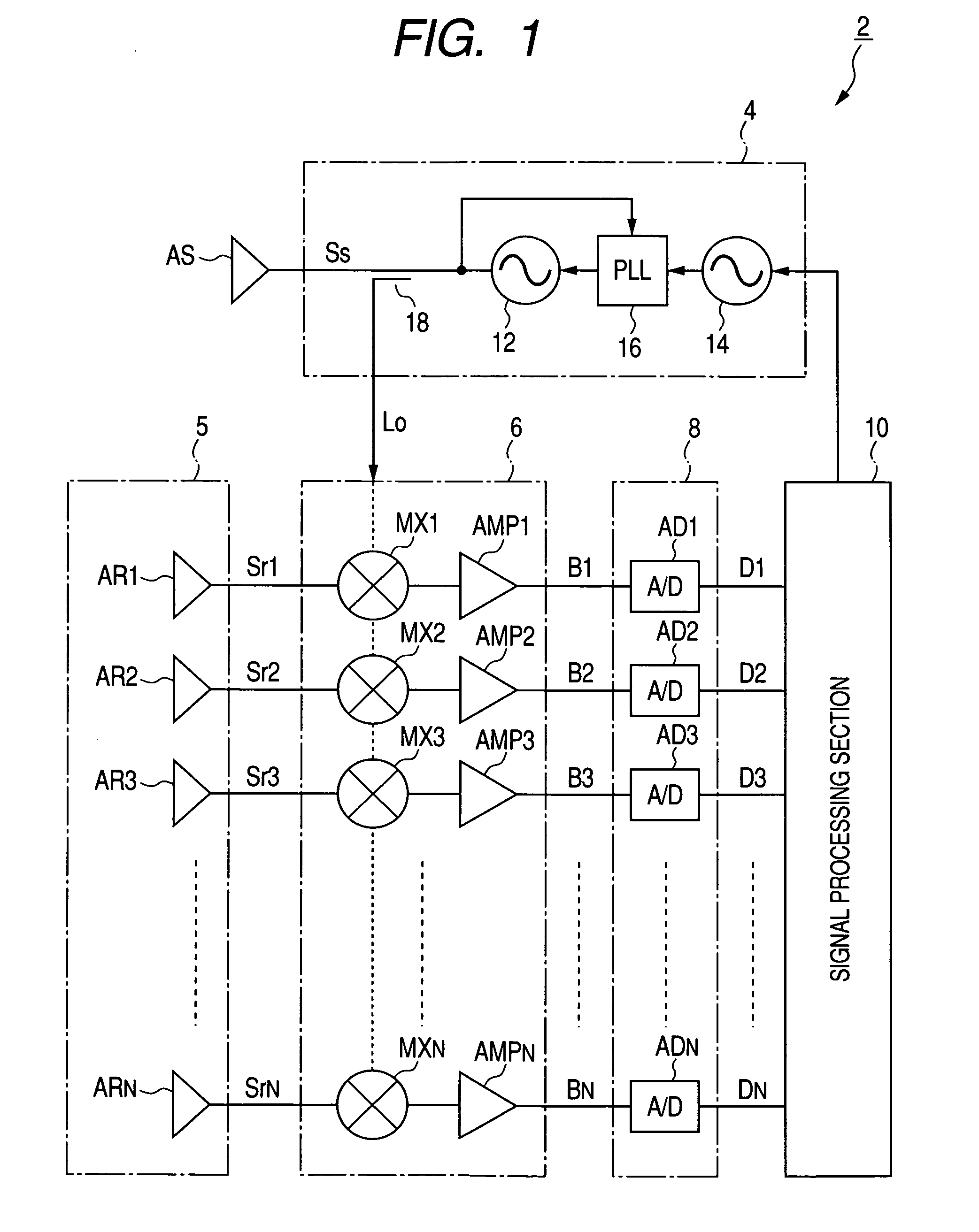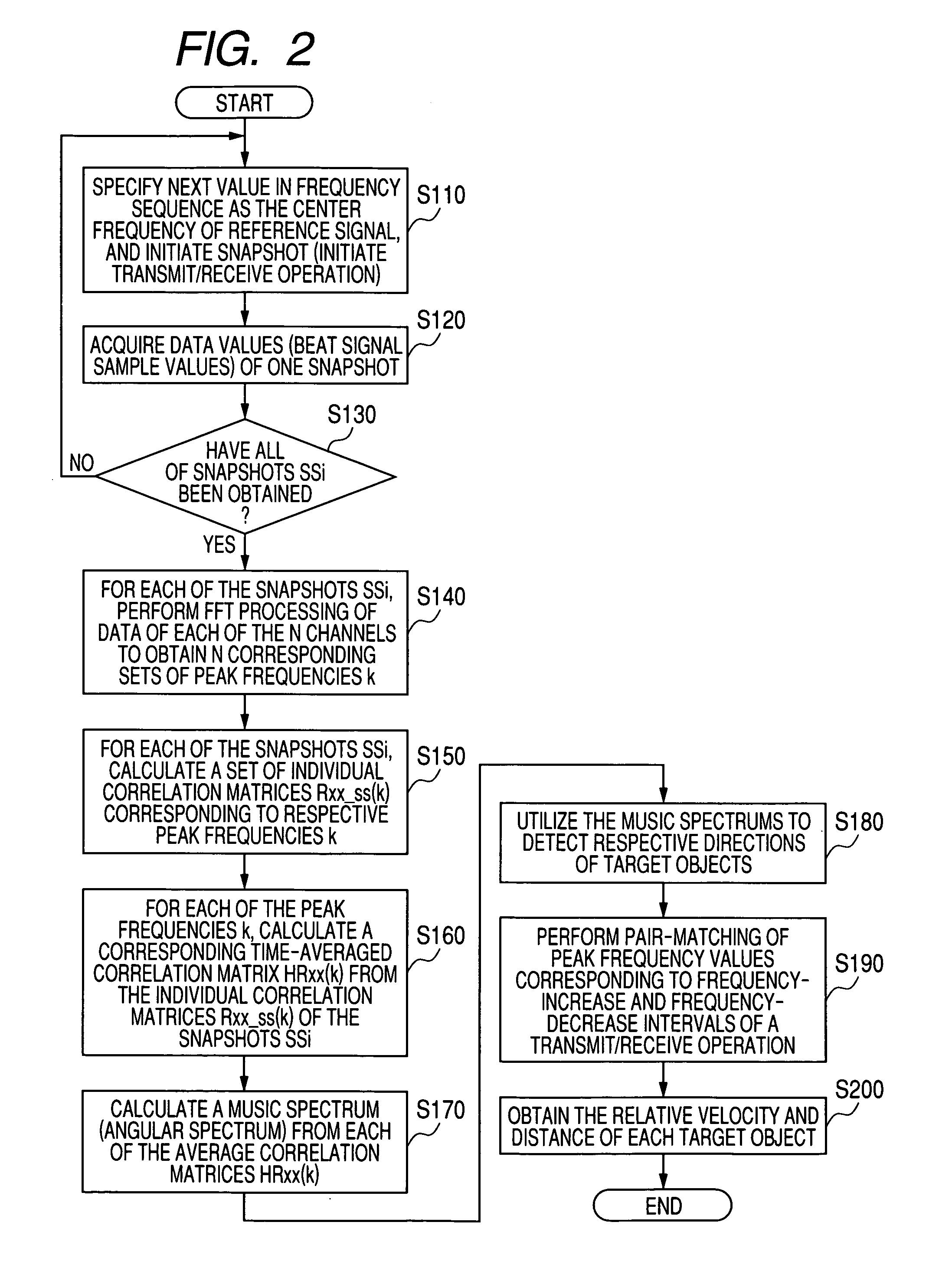Target object detection apparatus for acquiring information concerning target objects based on correlation matrix derived from signal values corresponding to reflected electromagnetic waves
a target object and detector technology, applied in the direction of multi-channel direction-finding systems using radio waves, instruments, measurement devices, etc., can solve the problems of insufficient suppression of the correlation between the received incident waves and the number of antenna elements, and achieve the effect of improving accuracy
- Summary
- Abstract
- Description
- Claims
- Application Information
AI Technical Summary
Benefits of technology
Problems solved by technology
Method used
Image
Examples
first embodiment
[0036]FIG. 1 is a block diagram showing the overall configuration of an embodiment of a vehicle-installation radar apparatus, designated by numeral 2. As shown, the radar apparatus 2 includes a transmitter 4, a receiving array antenna 5, a receiver 6, a A / D converter section 8 and a signal processing section 10, together with a single-element transmitting antenna designated as AS. The transmitter 4 generates a frequency-modulated high-frequency transmission signal which is supplied to the transmitting antenna AS, for transmitting electromagnetic waves (radar waves) in the millimeter waveband. The receiving array antenna 5 is formed of a set of N antenna elements AR1 to ARN arrayed at equidistant spacings. The receiver 6 is supplied with high-frequency received signals Sr1 to SrN from the N antenna elements AR1 to ARN respectively, resulting from reflected radar waves that are incident on these antenna elements, i.e., waves which have been transmitted from the antenna AS and reflecte...
second embodiment
[0079]FIG. 5 shows the overall configuration of a second embodiment, which is a radar apparatus 2a. The radar apparatus 2a differs from the first embodiment only with respect to the receiving system and the contents of processing that is executed by the signal processing section 10, and only these different features will be described in detail in the following. With the second embodiment, a high accuracy of detecting respective relative velocities of one or more target objects can be achieved. This is done by achieving a high resolution of detecting respective component frequencies of a beat signal that is derived from a received signal.
[0080]As shown in FIG. 5 the receiving system of the radar apparatus 2a incorporates a receiving antenna AR1 formed of a single antenna element, in conjunction with a mixer MX1, an amplifier AMP1 and an A / D converter AD1. The reference signal generating circuit 14 of this embodiment is controlled to generate a reference signal which is held at a fixe...
PUM
 Login to View More
Login to View More Abstract
Description
Claims
Application Information
 Login to View More
Login to View More - R&D
- Intellectual Property
- Life Sciences
- Materials
- Tech Scout
- Unparalleled Data Quality
- Higher Quality Content
- 60% Fewer Hallucinations
Browse by: Latest US Patents, China's latest patents, Technical Efficacy Thesaurus, Application Domain, Technology Topic, Popular Technical Reports.
© 2025 PatSnap. All rights reserved.Legal|Privacy policy|Modern Slavery Act Transparency Statement|Sitemap|About US| Contact US: help@patsnap.com



